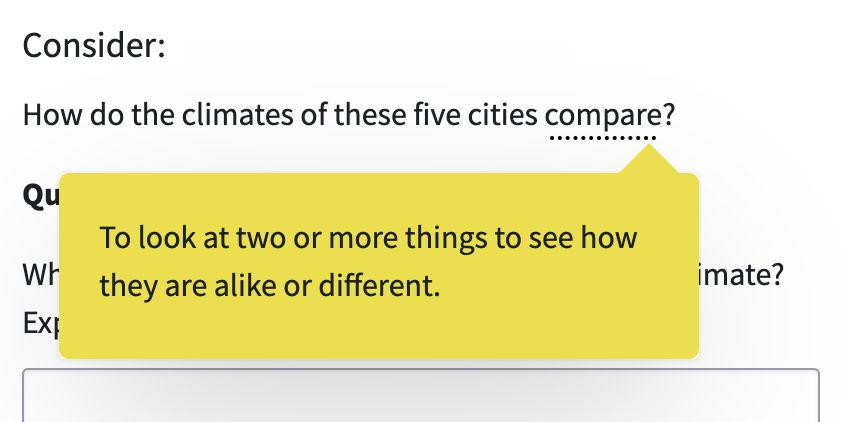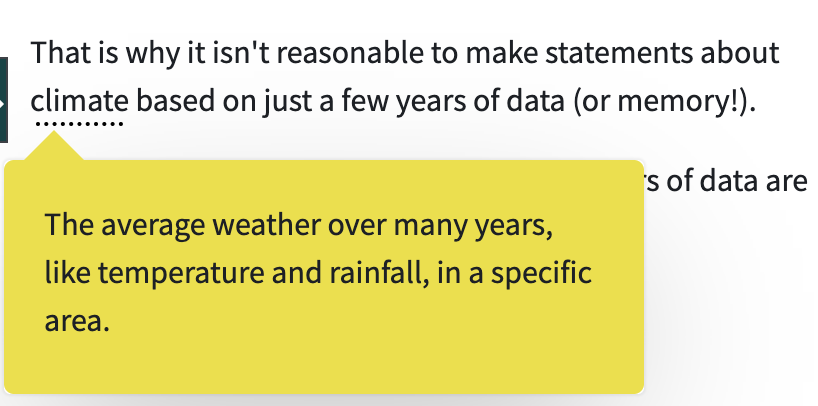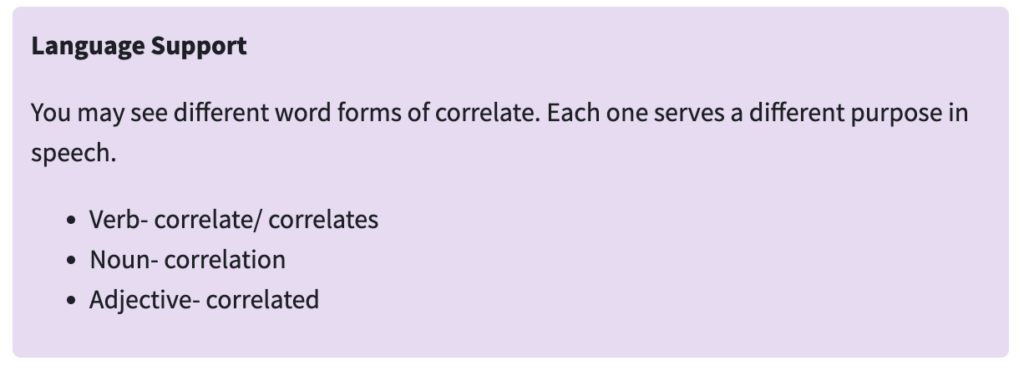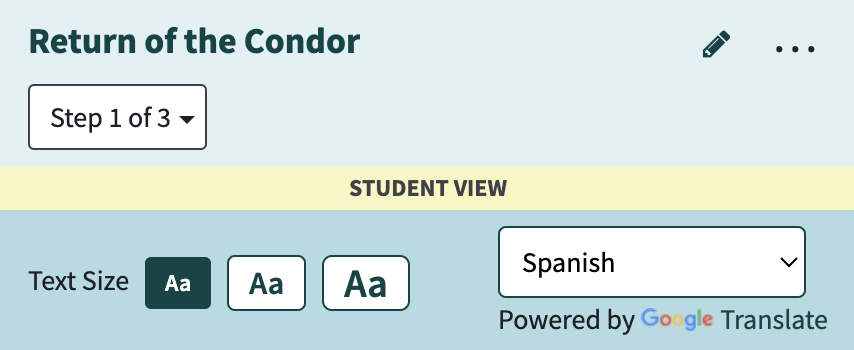Multilingual learners are the fastest-growing population of K-12 students in the U.S. Throughout the past six months, Tuva has taken a number of steps to ensure multilingual learners have access to rigorous STEM instruction.
1. Added a Keywords Feature
Academic language differs markedly from the language used in everyday social interactions. Fluency in conversational English doesn’t equate to academic fluency. That’s because social vocabulary is usually acquired within two years, whereas academic vocabulary can take up to 10.
To support students as they develop academic vocabulary, Tuva has added a keywords feature. When students click on an underlined keyword, a definition will appear. These definitions are written at a 6th-grade reading level.

Many of Tuva’s keywords are tier two vocabulary words.
Tuva’s keyword feature defines terms not frequently heard in everyday conversation. This includes tier two vocabulary, academic language used across multiple subject areas (e.g. clarify, analyze, compare), and tier three vocabular, disciplinary-specific terminology (e.g. photosynthesis, velocity).

Other keywords are tier three vocabulary.
2. Authored WIDA-Aligned Lessons
Using the WIDA framework, we’ve begun weaving multiple English language development supports into our math and science lessons.
Language Support Tips
All learners, but especially multilingual learners, benefit from explicit instruction in academic language usage. Our newest lessons include language support tips such as sentence starters, instruction on parts of speech, or lists of helpful phrases for using data to inform, explain, or argue.

Prompt Discourse
Conversation with peers helps multilingual students build a more nuanced understanding of STEM concepts. It also gives learners more opportunities to practice academic vocabulary and language.
We’ve made a concerted effort to promote discourse in any new full-length lessons and activities. By adding “Discussion” prompts to the lessons, we encourage students to discuss their thinking aloud.

Try One of Tuva’s New WIDA-Aligned Lessons
Elementary STEM: Preparing for a Hurricane

Secondary Math: Tackling Correlations

Secondary Science: Sun Seekers of Turtle Island

Check out our other lessons intentionally designed to support multilingual learners. View our secondary STEM lessons with ELD support or our elementary STEM lessons with ELD support.
3. Enabled Easy Language Translation
Translanguaging boosts STEM comprehension. It also accelerates English language development. Thus, Tuva has prioritized making it easy for users to switch between languages in our lessons. Simply click the three dots in the upper right of the instruction panel to make the Google Translate widget appear.
